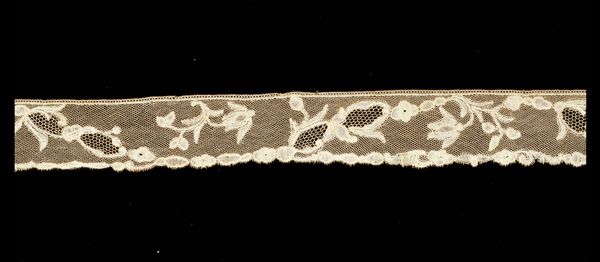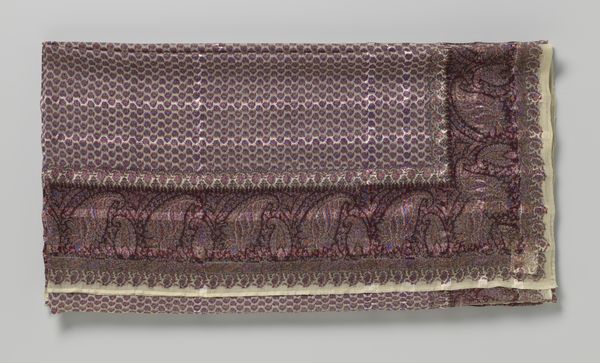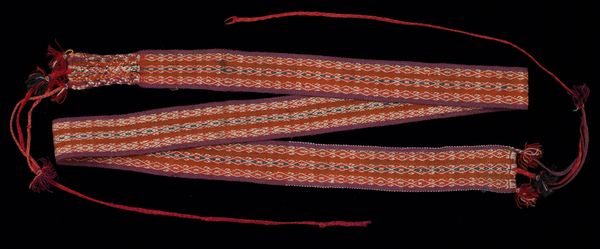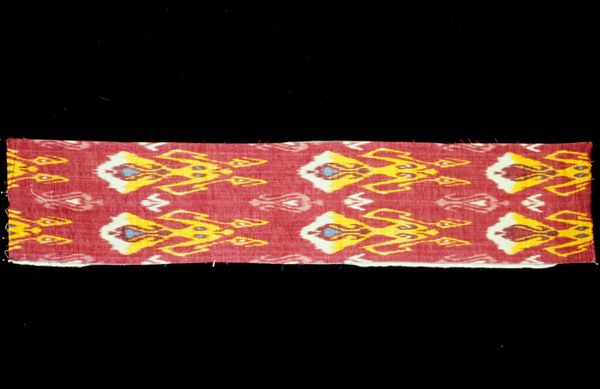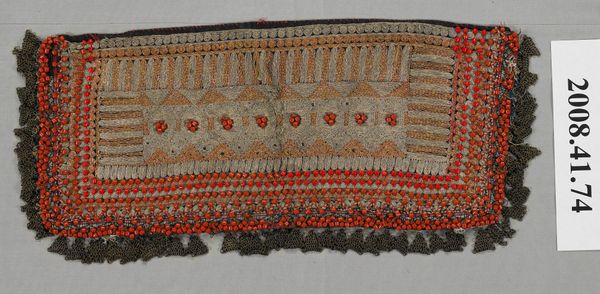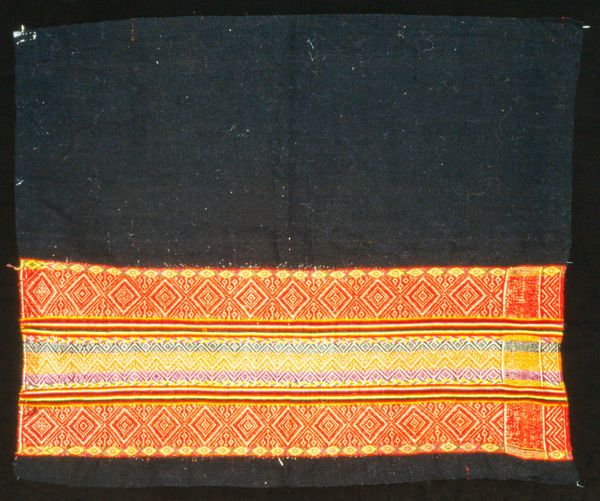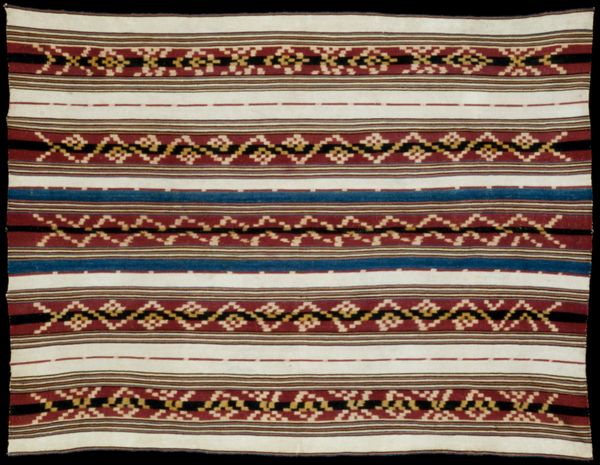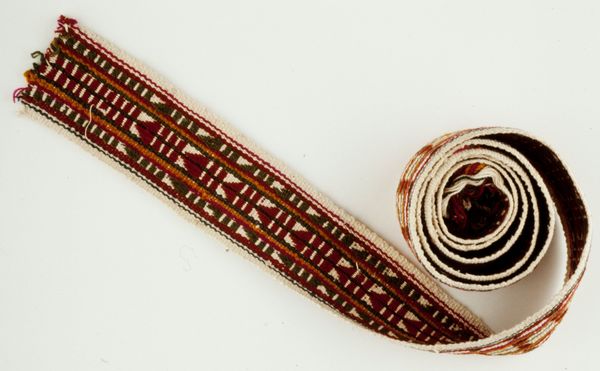
textile, wool
#
natural stone pattern
#
worn
#
textured
#
detailed texture
#
textile
#
wool
#
possibly oil pastel
#
carved into stone
#
watercolour bleed
#
layered pattern
#
organic texture
#
watercolor
Dimensions: 6 1/4 x 3/4 in. (15.88 x 1.9 cm)
Copyright: Public Domain
Curator: Here we have an interesting example of 19th-century craftsmanship: a textile trim, likely from a man’s jacket. It is housed here at the Minneapolis Institute of Art. Editor: Oh, it feels worn but in a way that almost enhances it, like the comfortable sag of well-loved clothes. The texture alone speaks volumes; it whispers stories of repeated wear. Curator: The primary material is wool, which would have been crucial for warmth and durability, and significant to understanding the socio-economic conditions that demanded hard-wearing, practical clothing for workers. Editor: There's a simple elegance, though. A deep band of what looks like coffee beans on a khaki field, bisected by triangles—a strange geometry and earthy color combination that somehow... calms. It's very modest but hints at personality and design skill in those small geometric details. Curator: Precisely. These detailed patterns may speak to regional influences or clan affiliations, becoming markers of identity and community embedded in everyday garments, thus connecting personal narratives to broader social frameworks. The wool also demonstrates the resources available to the individual or group producing this jacket. Editor: When I see something like this, I always wonder about the hands that made it and wore it, what their days looked like. I can’t help but picture a landscape that's rough-hewn like this trim. It feels like a scrap of the earth somehow. Curator: That speaks to the relationship between people, their clothes, and their environment, of course. Production methods and available resources invariably shape these designs, representing a reciprocal interplay that collapses romantic ideals and offers more truthful, albeit understated, narratives. Editor: Yes, the modest scale is something too, which makes its complexity even more intimate, like a secret code woven for only the wearer to know. Curator: It's precisely these overlooked, almost humble objects that reflect entire worlds when understood in a context of labor, material, and daily existence. Editor: A little cloth with worlds woven in! A poignant piece. Curator: Exactly; examining these elements reveals hidden dimensions—from trade networks to resource accessibility, connecting aesthetics and ethics. It makes me reconsider ideas of beauty.
Comments
No comments
Be the first to comment and join the conversation on the ultimate creative platform.


